Cymbidium orchids have a unique feature among other orchids – they are more frost-resistant. Winter blooming is common for them and can last up to 3 months. Orchids of this species are quite beautiful and refined because they have long white leaves. If you like cymbidium orchid, then feel safe to buy it for your terrace or window because many people like this flower.
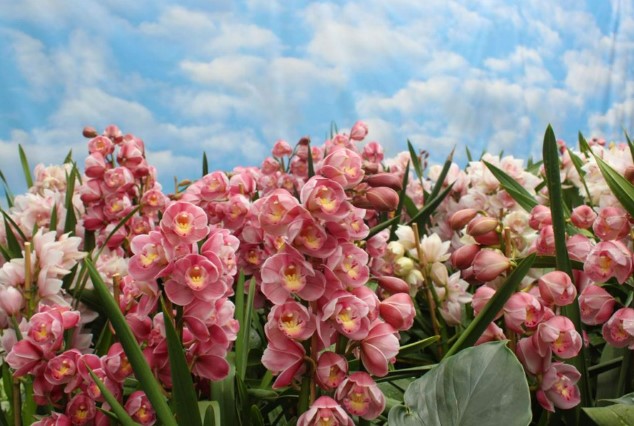
Cymbidium orchid and advice for the purchase
You may not know it, but the orchid family is the largest in the plant kingdom, with about 30,000 species. The Cymbidium species are not as diverse, although there is plenty to choose from. Cymbidium orchids are perennials with a variety of colors from dark green to pink.
There are hundreds of different hybrids of the flower available for sale. Miniature orchids of this cymbidium species are more heat-loving and ideal for apartments. By choosing an orchid with a large number of buds, you will admire the blooms and scents of the plant for several weeks.

What varieties of cymbidium orchid are available
This orchid species is represented by three main species, not counting breeding crosses. Does the choice seem small? Don’t worry, even three of these orchids will easily catch your heart.
- Cymbidium dayanum is a unique phoenix orchid, which has just risen to illuminate your home. These flowers are white with maroon stripes.
- Cymbidium erythrostylum is a beautiful orchid native to Vietnam. It has white flowers with a red stripe in the pollination area.
- Cymbidium tracyanum is also known as Tracy cymbidium. This type of orchid has large, fragrant, yellow-green flowers with brown stripes.
Decorating your space with these beautiful flowers, you definitely won’t regret it, creating a cozy garden aroma inside.
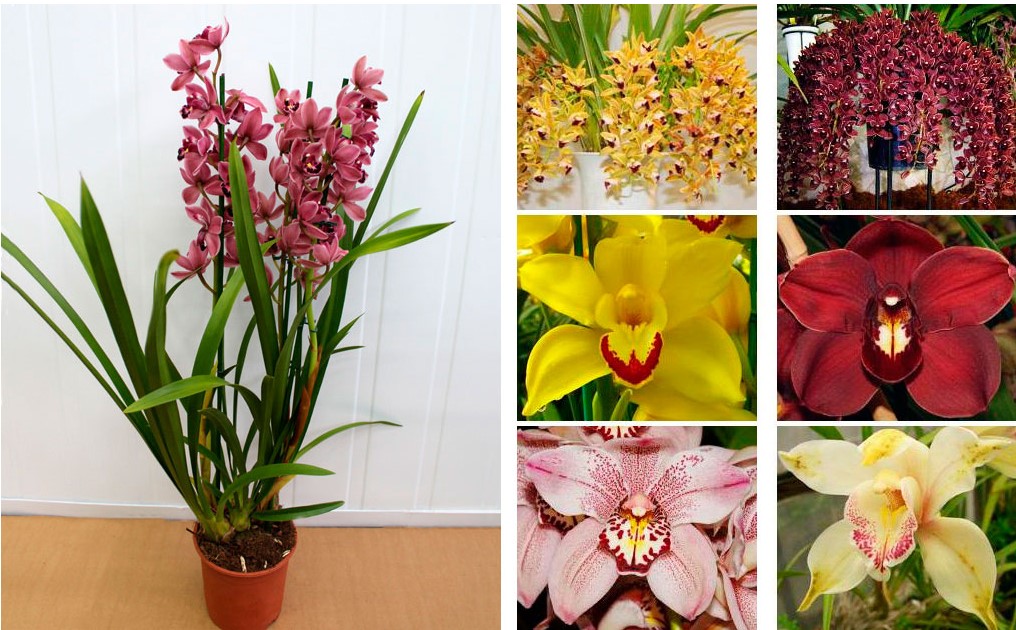
Basic characteristics of caring for cymbidium orchid
The cymbidiums flower is not the most fastidious flower in the world, and its care is generally very similar to the care of other species. In short, there are the basic care recommendations below:
- Light: They need lots of light, but not direct sun.
- Climate: Most are cold climates, but some tolerate moderately warm temperatures.
- Watering: Moderate watering frequency and small volume. Irrigation with warm water only is recommended.
Each type of flower is different, and the specifics of care differ from plant to plant.
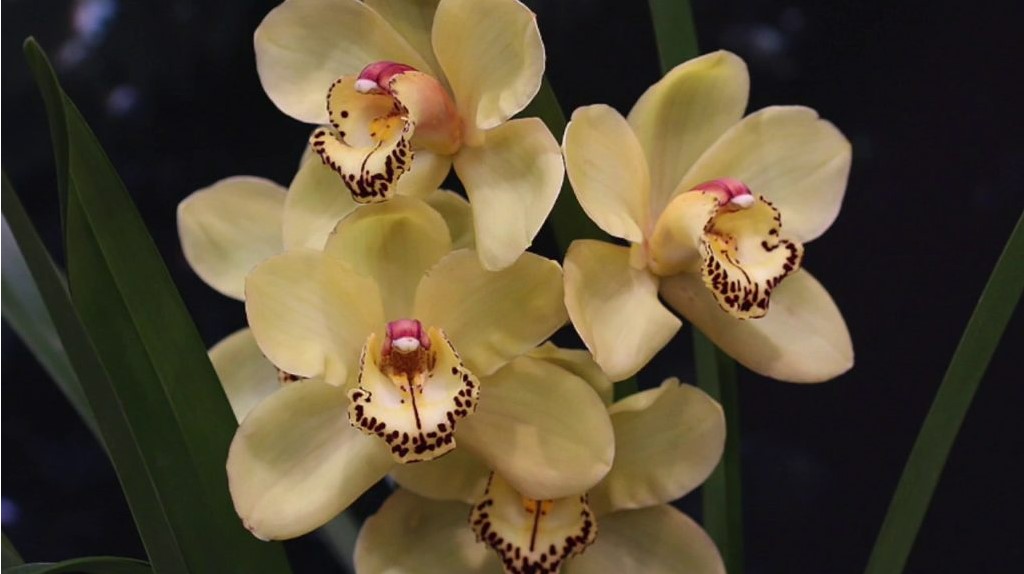
Light and location
Light is very important for Cymbidium orchids. Most orchids need to be in brightly lit places, but few orchids tolerate direct exposure, especially in hot climates or in intense sun. If you grow them indoors, keep them in a particularly bright room near a window. They also do very well outdoors.
If you notice that your cymbidium’s leaves are starting to turn dark green, your plant probably needs more light.
It is also important to keep the plant in a well-ventilated area where it is not exposed to drastic changes in temperature.

Temperature range
The optimum temperature for cymbidiums is about 15 °C to 18 °C or 59 °F to 64.4 °F. However, they can tolerate night temperatures of up to 10 °C or 50° F during the cold months and up to 30 °C or 86° F for short periods during the warm months in the summer.
Cymbidium are one of the least demanding indoor orchids and have highly decorative flower spikes. The indoor plants need a distinct temperature drop between day and night during middle to late summer to flower well.
In late summer and early fall, night temperatures that fall below 58°F (15°F) initiate the development of flower spikes. You can use a high phosphorus bloom booster to help.
Keep this white flowers shaded from hot, direct sunlight in hot weather, which can scorch their leaves. Some direct sun in winter is fine.
Cymbidium orchid plants need cool temperatures to trigger flower buds.
Watering cymbidium orchid
It’s desired to water cymbidium orchids constantly in small amounts, but not abundantly. From late spring to September, it is recommended to water every 2-3 days, and in winter – once a week. It is very important that the pot has good drainage and the water is not limey. During the winter bloom, reduce watering. Water thoroughly with room temperature water during active growth (March – October).
Just make sure the bottom of the container isn’t touching the water, as this can lead to root rot.

Fertilization of cymbidium orchids
Cymbidium orchid plants prefer soft potting medium with no lime in them. It is advisable to choose a type of pot that is well drained and provides sufficient moisture evaporation, excluding potting medium decomposes. This type of bloom can be fertilized more often and with more concentrated fertilizers than other flowers.
It is recommended to use fertilizers high in nitrogen during the spring and summer months of active growth, and avoid fertilizers high in nitrogen from August through spring.
In late summer, you may start using fertilizers high in phosphorus to increase flower spikes production.
Fertilize less often in winter (once a month is sufficient).
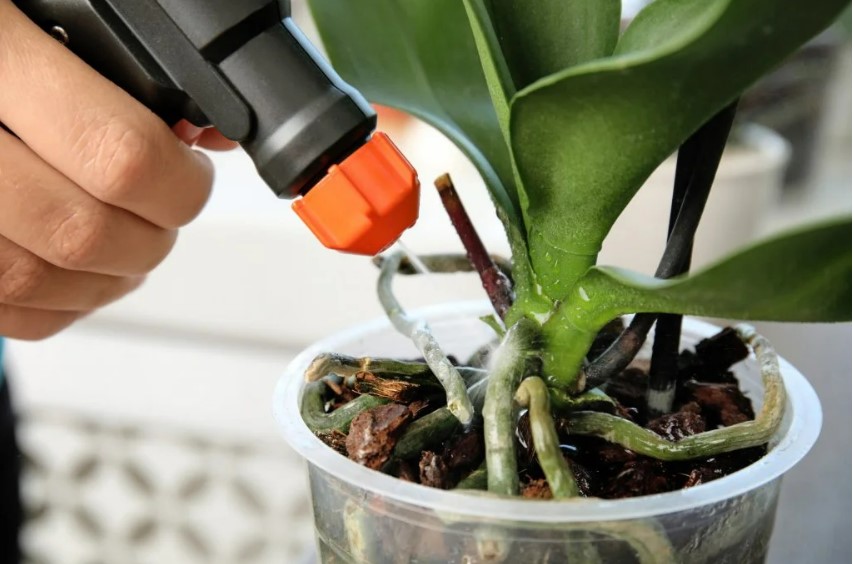
Potting medium and compost
A suitable potting soil for the Cymbidium orchid plants should be free-draining and acid-reactive. Various mixtures have been used over the years, but they usually contain the following elements: spruce or pinus radiata bark, perlite, sequoia compost, peat, sand, volcanic rock, oak leaf and dolomite as an acidity buffer.
However, it is often difficult to get all the elements needed to create a hand-crafted substrate. In this case, you can choose a commercial substrate. It is recommended to moisten the substrate before use.
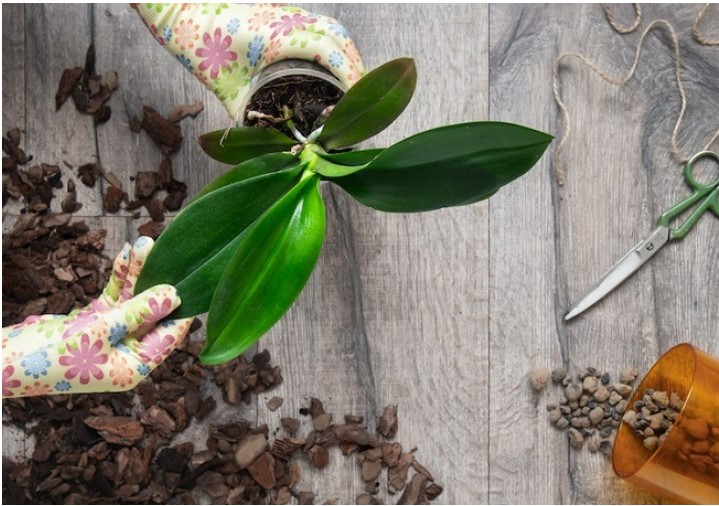
Read also: Healthy orchid roots
The art of transplanting cymbidium orchids
Transplanting cymbidiums is only required every 2-3 years when the substrate no longer drains properly or when the plant no longer has enough place to form new stems.
Therefore, at some point, always before 3 years have passed, the plant should be divided and transplanted. When transplanting, try to create divisions of 2-3 green bulbs with stems to provide water and nutrition. Let’s start with the process:
- You will need to remove the plant from its current pot. You may have to tap it a few times.
- When you get it out, proceed to divide the flower by breaking it down at its natural dividing points.
- Run plants through the water to get a better look at the roots. This way, you can cure and remove dead roots.
- Before transplanting, the new substrate should be moist. Select a pot of suitable size for each dividing part, but do not overfill it.
- Insert the transplanted parts into the new pot with the new substrate so that they remain still and do not move too much.
- For the first two weeks, place these pots in a cool, shaded, sheltered location. Then return them to their normal growing location with normal light and watering.
At first sight, the task of transplanting seems very difficult, but as soon as you have done the procedure at least once, you can do the next one with your eyes closed.
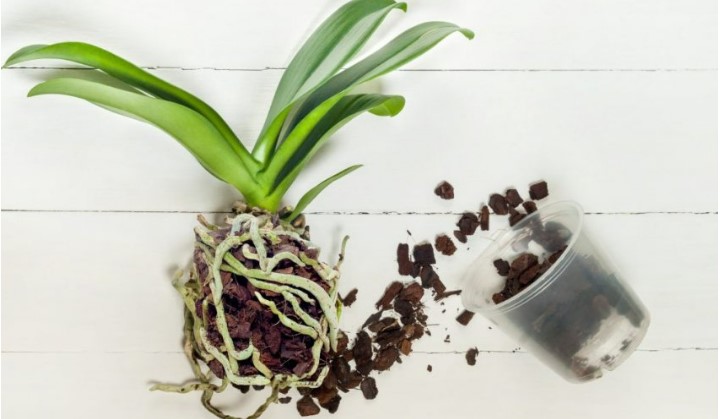
Features and frequency of flowering for cymbidium orchid
Most cymbidiums bloom once a year, and the flowering process is as follows. In the spring and summer, new shoots form and mature at the base of the old ones. In late summer and early fall, when temperatures begin to drop, a flowering stem emerges.
In late fall and through the winter, flowering occurs, sometimes fragrant, which lasts 8 to 12 weeks. To encourage its development, it is advisable to take cymbidium orchid plants outside in late spring and monitor their care during the summer.
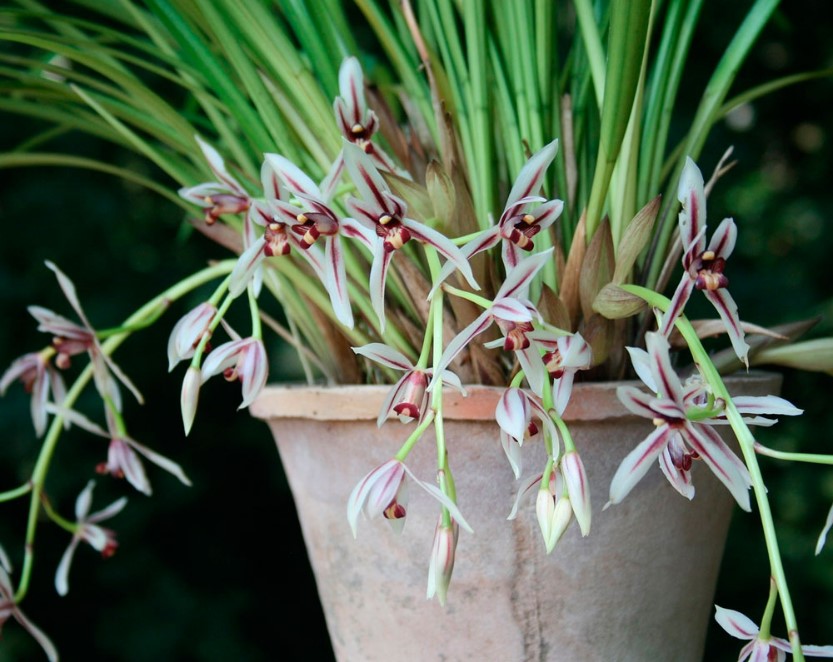
What type of pot is ideal for cymbidium orchid
These plants do not need large pots. It grows best in places where the roots are well compacted. It does not have to be a perforated container, but it should have good drainage. You should remember that it can be planted in self-watering pots.
Moreover, if it is transparent, so much the better because then the roots will get the sunlight they need and, in addition, you will be able to check their condition.
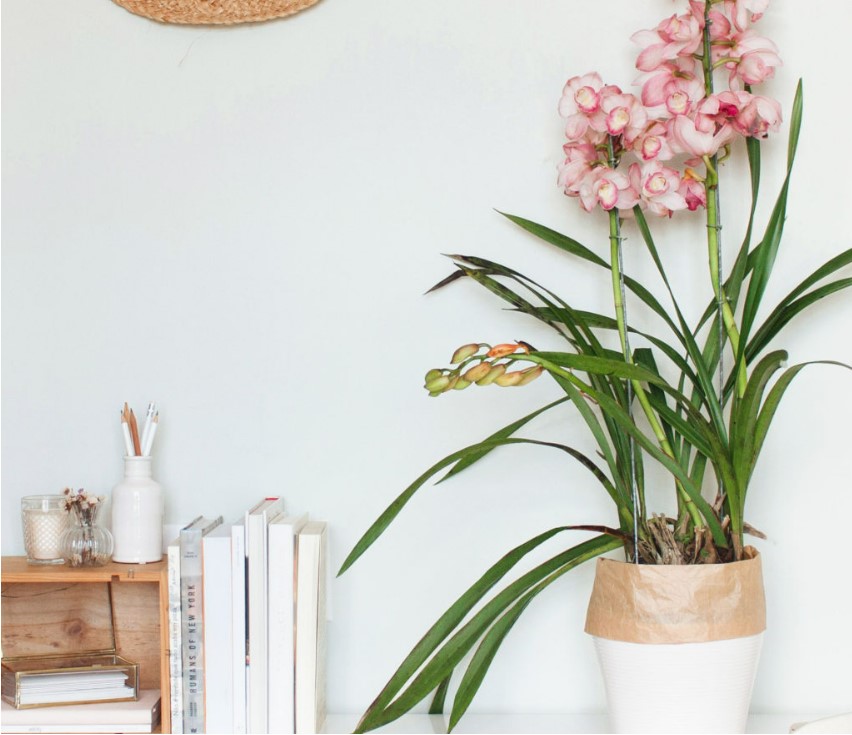
How to fix the stem of an orchid and thereby improve its growth
If you want your orchid not to fall in different directions and always give healthy young shoots and lush color, make sure it grows. This is not difficult to do. Simply attach special vertical stakes next to your flower by inserting them into the substrate.
You can do this procedure with tweezers or special fasteners, which you can easily find in garden and department stores.
Growing cymbidium at home isn’t too difficult
The cymbidium is one of the easiest orchids to grow in temperate climates, requiring no special equipment or skill. It can grow even from a vegetative stem and produce a new shoot afterward. In its natural habitat, the cymbidium orchid itself grows as an epiphyte or as a ground plant. However, all species cultivated at home are epiphytes.
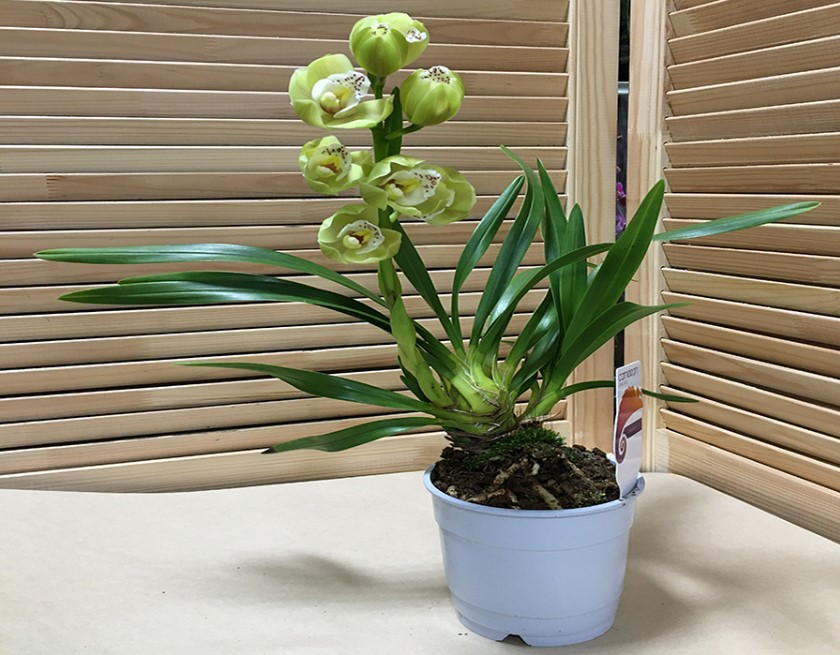
Pests destroying cymbidium orchid plants and ways to combat them
Unfortunately, many pests and pathogens will try to destroy your beautiful orchid. That’s why, below, we’ll give you ways to control them.
- The leaves are turning whitish. This indicates that the flower has spider mites and should be treated with arachnitid.
- The leaves are pale yellow with black spots. This occurs when the plant is exposed to too much sunlight. It should be moved to a place where it is not exposed to direct sunlight.
- The roots are rotted, and the aerial part is weakened, so the flower is loose. This is due to the pythium parasite. Thiophanate or benomyl can be used to eliminate it.
- Flower buds do not open and fall off. This is caused by elevated temperatures. Move it to a cool place and spray the leaves with water without letting them fall off in the center.
Armed with this knowledge, you can easily defeat any pest and keep your orchid alive.
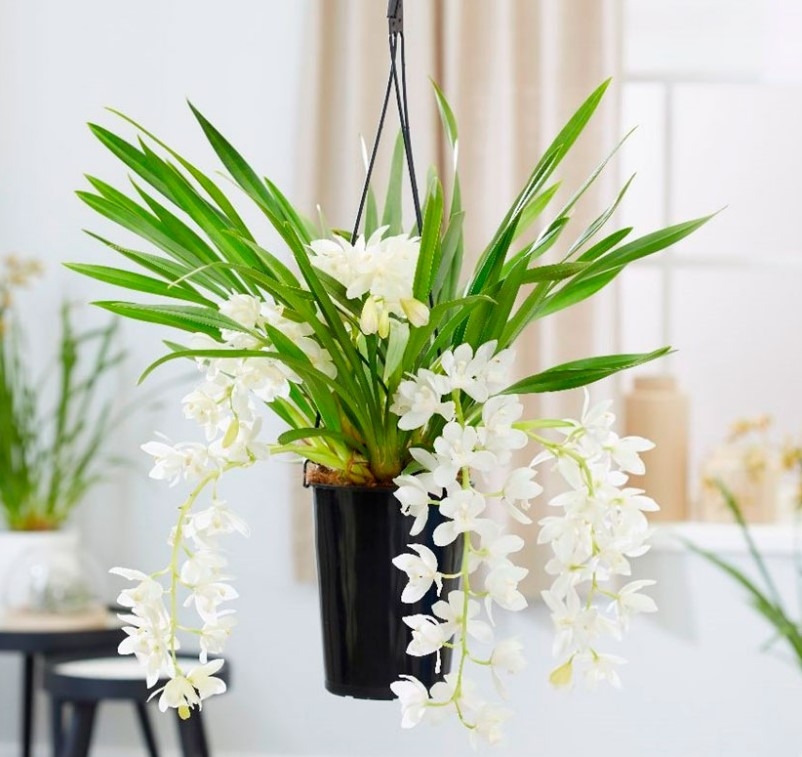
Conclusion: It’s definitely worth taking a look at a cymbidium orchid
Cymbidium isn’t demanding to care for, easy to cultivate, and if you take these plants in the store, it will not cost you too much. Sometimes the cymbidium needs to be fertilized, but that is not a problem as well. The biggest problem experts call damage from diseases and pests, so leaving the cymbidium orchid plants unattended for a long time will not succeed.
